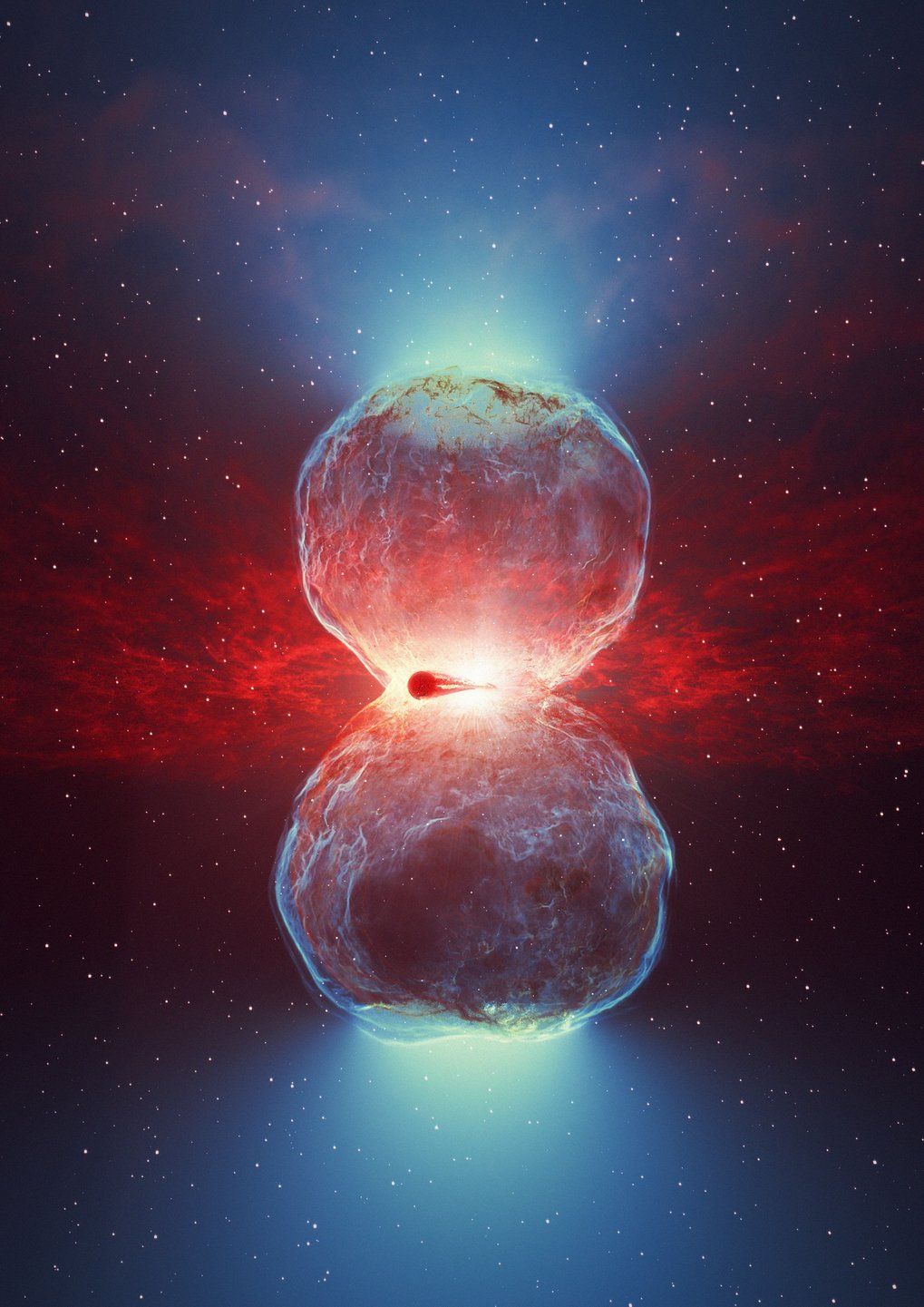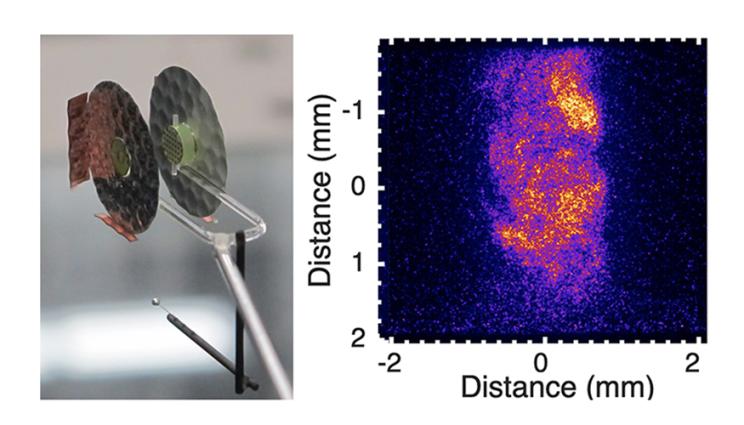H.E.S.S.観測所とフェルミ衛星で、RSオフィウチの噴火を追跡する研究者たち (With the H.E.S.S. observatory and the Fermi satellite, researchers track the eruption of RS Ophiuchi)
2022-03-10 マックス・プランク研究所
新星の爆発を超高エネルギーのガンマ光で観測し、その光芒とその後の減衰を1ヶ月にわたって追跡することが初めて可能になりました。研究チームは、H.E.S.S.観測所とフェルミ衛星のデータを組み合わせて、ガンマ線の放出過程を明らかにしました。また、新星が粒子を理論的な限界まで加速していることがわかり、驚きました。

© DESY / H.E.S.S., Science Communication Lab
 新星の痕跡:2本の曲線は、2021年8月9日(緑)と8月13日(オレンジ)にフェルミ衛星とH.E.S.S.観測所が測定したRSオフィチからのガンマ線のエネルギースペクトルを示しています。
新星の痕跡:2本の曲線は、2021年8月9日(緑)と8月13日(オレンジ)にフェルミ衛星とH.E.S.S.観測所が測定したRSオフィチからのガンマ線のエネルギースペクトルを示しています。
© H.E.S.S. Collaboration
<関連情報>

Gamma light from a nova
or the first time, it has been possible to observe the eruption of a nova in very high-energy gamma light and to follow ...
Just a moment...
回帰新星RSオフィウチにおけるハドロン粒子加速の時間分解観測 Time-resolved hadronic particle acceleration in the recurrent nova RS Ophiuchi
SCIENCE • 10 Mar 2022 • First Release • DOI: 10.1126/science.abn0567
Abstract
Recurrent novae are repeating thermonuclear explosions in the outer layers of white dwarfs, due to the accretion of fresh material from a binary companion. The shock generated when ejected material slams into the companion star’s wind can accelerate particles. We report very-high-energy (VHE, ≳100 GeV≳100 GeV) gamma rays from the recurrent nova RS Ophiuchi, up to a month after its 2021 outburst, observed using the High Energy Stereoscopic System. The VHE emission has a similar temporal profile to lower-energy GeV emission, indicating a common origin, with a two-day delay in peak flux. These observations constrain models of time-dependent particle energization, favoring a hadronic emission scenario over the leptonic alternative. Shocks in dense winds provide favorable environments for efficient acceleration of cosmic-rays to very high energies.



